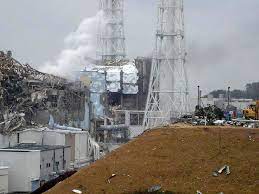12 Years Later: The Long Term Impact of Fukushima-Daiichi

May 25, 2023
March 11, 2011, is a day that will truly live in infamy, especially for the residents of Fukushima Daiichi, Japan. The Tohoku Earthquake set off a chain of events that created one of the largest nuclear disasters in history, involving the Tepco Fukushima Daiichi Power Plant.
As a result of the earthquake, the pacific tectonic thrusted upward, generating a massive tsunami, some saying it measured 37-50 feet tall. The tsunami inundated the facility, disabling all cooling systems within the reactors generating power for the plant, essentially leaving the reactors to overheat. As tsunami and earthquake recovery efforts were also underway, 160,000 citizens living in Fukushima were mandatorily evacuated due to the risk of radiation contamination. Because the event wasn’t just a one and done. For days following the initial inundation of the plant, the reactors continued to overheat, resulting in hydrogen explosions, atmospheric radioactive emissions, and radioactive leaks into the sea.
Radioactive deposits of Caesium and Iodine, harmful chemical elements, were leached into the nearby waterways and soils of the neighborhoods and surrounding farmlands. -But it wasn’t just humans facing the potential consequences of such a large-scale disaster; radionuclides were introduced into the food chain. Due to a surprisingly low long term exposure threshold, although radiation levels shot up right after the incident, the levels continued to reduce over the following months. The World Health Organization recommends that there should be no more than 10,000 Berequerals of radiation in water levels, but immediately after the Fukushima incident, there were over 50,000,000 berequerals in waterways.
This has immediate effects on both the human and wildlife population. The Fukushima Exclusion Zone was established as a primary contamination zone of swaths of the Fukushima province, meaning that many of the 160,000 residents who were evacuated have yet to return. Only 41,000 evacuees have returned to their home, revealing continued fears of contamination. Exposure to high doses of radiation yielded many problems: DNA damage in wild boars, barn swallows and earthworms, (just to name a few.) Additionally, millions of tons of contaminated topsoil were removed and put in safe, temporary storage. However, some of these storage sites are reportedly located in flood zones, signaling the risk of further contamination. Although topsoil removal encouraged the decontamination of soils within the environment, GreenPeace issued a 2016 statement, warning that the public may not know the true effects of radiation in the forests surrounding Fukushima, and is only just beginning to reveal itself. Cedar trees were also reportedly affected, corresponding with GreenPeace’s environmental concerns.
In a survey conducted regarding general information and opinions regarding Fukushima Daiichi after an educational presentation, survey participants unanimously cared about the safety of nuclear plants, over half of which were aware of the processes behind the generation of nuclear power. While this survey may have inherent bias due to the population being of roughly similar age, education level, and socio-economic status, the results do indicate the desire for governmental transparency, both regarding regulatory and decontamination processes at nuclear plants.
Although the incident occurred 12 years ago, the even longer term impacts remain unknown. Now, there remains an incredibly diluted risk of contamination and low rates of continued exposure in many animals, however no risk is zero and proof of long term minor contamination is evident.








